Plant Problems
Are your tomato ’s leaves turn yellow , and you are n’t quite certain why ? There are actually many different reasons this can happen ! In this clause , homesteader and garden expert Meredith Cohrs examines the many cause why your tomato plant plant ’s leaves are turn yellow , and how you may specify it !
Contents

tomato plant are an iconic home garden veg . They ’re beautiful , delicious , andfairly easy to turn . find out our prized tomato plant plants in distress is always disconcerting . Any time your previously respectable tomato plant looks off – leaf curl , white-livered leaves , tell apart – we run to overreact , flush the cyberspace for solutions , and take quick action .
Before you panic , however , know that yellowing leaves are incredibly common on tomato plants and often represent a job that is easy to fix . With a footling TLC , in most circumstances , your tomato plants should recover in clock time if you go for the right remedies .
So , what is it that actually can cause chicken Lycopersicon esculentum leaves ? There areeight vulgar reason for yellow love apple parting , and we plan to incubate each in item . We ’ll serve you identify the problem , implement the fix , so your tomatoes can get back to their happy selves in no time !

Seed Leaves Are Turning Yellow
I ’m including this on our leaning because it ’s the first time you ’re likely to see yellowing leaves on your tomato plant . The great tidings is that this is a completelynatural part of your plant ’s developmentso it ’s not a cause for headache .
Cotyledon leaves are the first leaves a seedling develops after it germinate . These are designed for one matter – supplying the seedling the nourishment it postulate to grow . Once that job is done , those leave are no longer necessary to the plant .
At that point they will begin to yellow and miss off . By the sentence this happens , your tomato seedlings should have plenty of true leaves tocontinue provide nutrientsto the growing plant .

No fix ! This is a all natural part of the tomato plant ’s life cycle . As your love apple originate , the leaves will course drop and new leaves will mature in their place .
Transplant Shock
If you notice yellowing leaves in a late transplanted tomato , the movement is probable graft shock . Tomatoes havefairly fragile rootsand they can be well damage when move into a new locating .
A lot of new gardener think they are theorize to ‘ smash up the roots ’ to encourage vigorous growth . This does n’t knead for tomato plant . Even the slightest break or nick in the root ball can leave in root harm . You ’ll note wilting , leafage curl and – of course – yellowing leaves if this has happened .
The good word is that balmy transplant daze is pretty harmless to the plant and it should recover with a little longanimity . verify that you do n’t introduce any other manikin of stress – pruning , misfortunate lacrimation habits , etc – during this time or your plant may not convalesce .
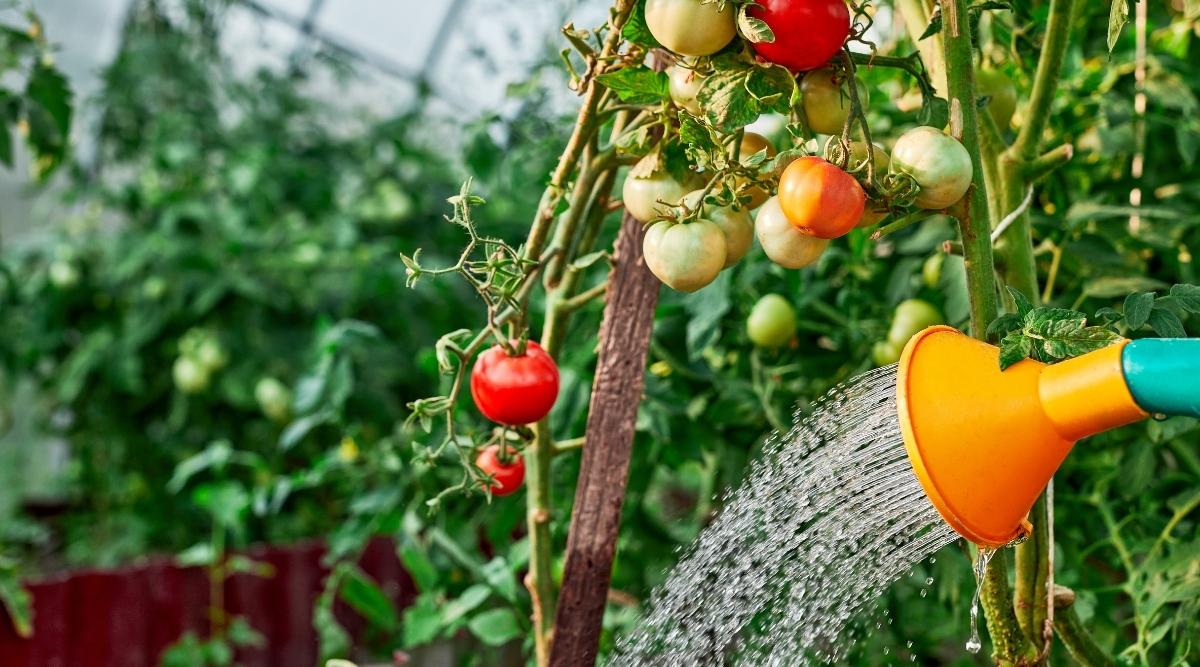
Be gentle when transplanting . Tomato roots are very tender so be as gentle as you’re able to when transplantation . Give the nursery commode a light squeeze to loosen the soil and then carefully extract the works by pull on the low stem . Do n’t touch the etymon . rather , place the entire radical clod and crushed part of the root word under the grease line . Gently fulfil in with soil , iron down with your fingers , and water thoroughly .
Be patient . If you notice that your youthful tomato plant has already had transplanting shock , cosset it a little and set aside the plant clip to classify itself out . Avoid introduce any additional forms of stress to your plant until it recover .
Over or Under Watering
Incorrect wateringis in all likelihood the most common reason for yellowing leaves , and problems with your tomato plants in general . Even though tomatoes are considered to be fairly easy to grow , they ’re jolly grumpy when it comes togetting the right amount of water .
Too picayune and the works wo n’t thrive ; too much and you ’ll damage the roots , which causes the plant life to not expand . You get the melodic theme … When it comes to watering , we truly are reckon for a ‘ goldilocks ’ situation .
A general baseline is about 2 ” of water a week for a industrial plant in the ground ( more if your tomatoes are set in containers ) . But environmental cistron like wind , heat , humidity , and soil type can all diddle a purpose in adjusting that number up or down .
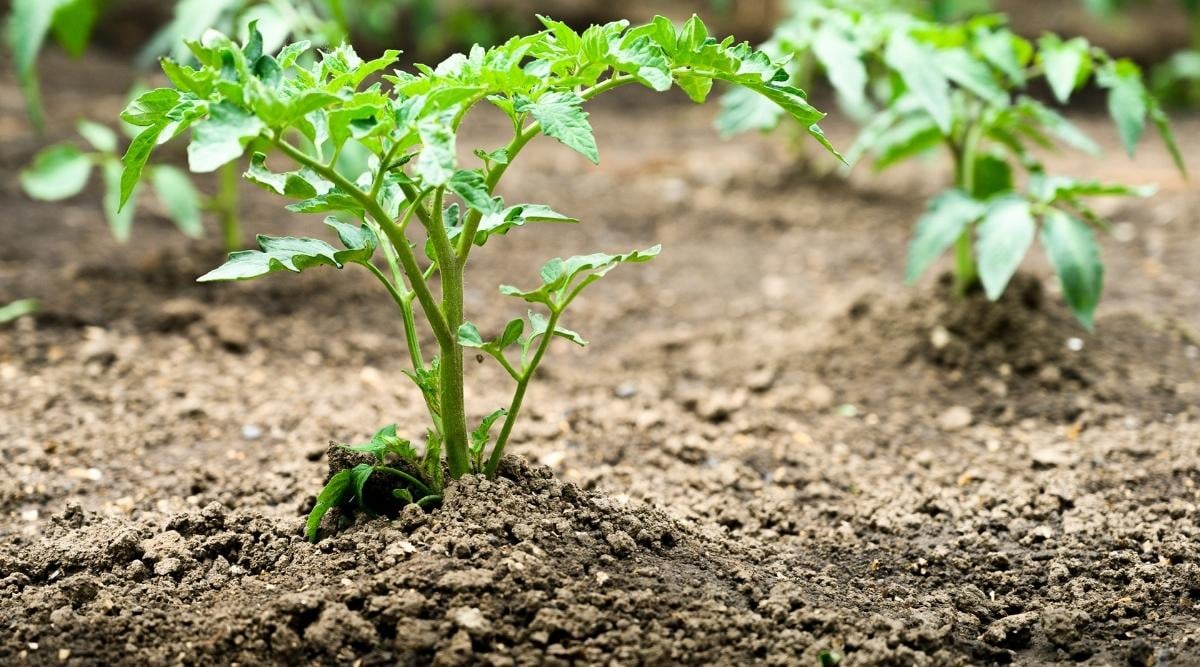
you could employ a water gauge if you want to be exact . Or , consider constitute an ‘ indicator plant ’ nearby . Impatiens make a groovy indicator plant – peculiarly if they are well shaded by your growing tomatoes – since they will immediately droop when they have too little piddle . If your impatiens need water system , your tomatoes likely do as well !
Overwatering is far more common with tomatoes(I have definitely been guilty of this ) . We always require our love apple to be happy , but too much water can actually suffocate the roots and cause them to waste . Root rotting can stimulate a host of publication and one of the first signs of this is yellowing leaves that drop off the works .
Underwatering can also cause the leaves to turn yellowafter they set off to wilt . You should notice the wilt long before the color change . But , if underwatering is the problem , you ’ll see that leaves commence to yellow from the edges before they drop off the plant .
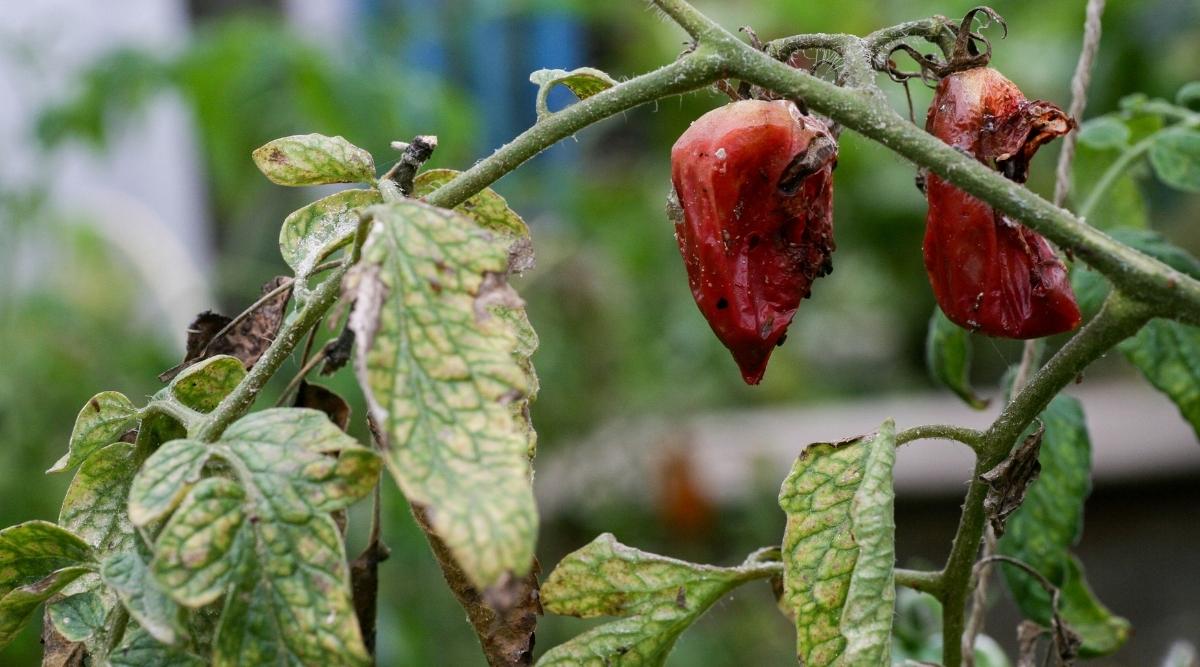
Let ’s look at how to irrigate your tomato plants aright to avoid this trouble altogether .
H2O lento and deep . Most plant do n’t like a torrent of water and Lycopersicon esculentum are no dissimilar . Think about the difference between taking a decent sip of water from a glassful vs someone give a fire hydrant for you . In an idealistic situation , you could mark up a drip organization before constitute . This will cede water to your plants in a consistent and manageable fashion . If you do n’t have a drip installed , you may merely change by reversal your hosiery on the lowest place setting and just lease it slowly rain buckets into the territory .
Water on a regular basis . There is n’t really a gruelling and fast prescript to how often you should irrigate your tomato . A lot depend on if you aregrowing in a hot , wry climateor if you ’ve receive rainwater of late and have cool conditions . It also depends on where the industrial plant is in its growth cycle . A good rule of pollex is to water every 2 - 3 days during the summer month ( more frequently in container ) . Once the yield is set , you’re able to skin this back to 1 - 2 times per week .

Water the roots , not the leaves . A common mistake with young gardener is to water the top of the flora rather than the soil underneath . This can in reality cause a circumstances of problems with your tomato include the bedcover of fungous disease ( induce from wet filth splashing on the undersurface of the low leaves ) , leaf tan , and appeal pests . Always shoot for to slowly water the soil either with a drip system or depressed flow hose . Add mulch to the base of your plant to maximize water keeping , keep your soil at a reproducible temperature , and minimize water splash back .
recall to always water your tomatoes in the forenoon and not during the heat of the day !
Soil Compaction (Poor Aeration)
territory crush causes alack of oxygen in the dirt . When this happens , the root of your tomato industrial plant start to suffocate and they can not delight the essentials – oxygen , water , and nutrients – to the rest of the plant life . The first sign of a problem will be yellowing leaf . If the condition persists , your plant life will surely die .
Soil compaction can happen in a few ways . The first is that the soil around and underneath your plants has n’t been relax or oxygenise . This make exceptionally dense soil that can be unaccommodating to young root system . Compaction can also be caused bystepping on the soilnear your plants .
The undecomposed fix for soil compaction is prevention . set out your tomato plants in good filth enriched with constitutional matter prior to planting . When transplanting , dig a hole 2 - 3 times the size of it of the tomato root musket ball and then meet it in with good soil . If you are establish seeds directly in the ground ( and not transplanting ) , see you have amended and aerate the soil below and around the planting web site .

insert worms into your grease . Worms are nature ’s best aerator . If you have a healthy garden biome , worms will by nature be a part of it .
Currently dealing with soil compaction?you may endeavor to air out the dirt by using aeration spindle or your hands . This action is probable to damage the origin organization , so be very conservative . If you ’re concerned about people or pets stepping on the stain around your plants , believe planting them in raised beds or container . This will take away an full cause of territory compaction with very little effort .
Disease
There are a number of diseases that can cause your tomato leaves to yellow . We ’ll talk about the 4 you are most potential to experience in this department . For any soil - borne fungal disease , be prepared to completelyremove the affected grease priorto planting again . If you vamoose this step , your tomato plant will continue to be plagued by the same issues time of year after season .
think of , when it hail to disease , prevention is , by far , the most effective discussion . For right prevention , espouse the following step :
Blight
former blight is because of a fungus in the soil call Alternaria solani , so if you bear this is your job , you ’ll require toreplace the contaminated soil before your next planting . Luckly , blight is easy to identify .
sick white-livered spots will appear on the lowest leaves of your industrial plant , turning into a dark dark-brown piece with yellowish at the edge . It looks a bit like a Taurus ’s eye . Leaves will eventually wrick 100 % yellow and fall off . Thistomato diseasemoves up the plant from the soil .
Septoria Leaf Spot
Septoria leaf spot is another fungal disease that looks a snatch like blight in the early day . do by the fungus Septoria lycopersici , it is most common in area that haveextended tight periodsor generallyhumid weather .
Brown spot willappear on the low leavesand will eventually spread to the stem . As it gets worse , the disease causes patch to grow into expectant chocolate-brown country on the leaves . When left ungoverned , leaves will turn completely chicken , then brown , then decrease off and die .
Fusarium Wilt
induce by Fusarium oxysporum , Fusarium Wilt is another disease that get down in the filth . Itinfects the Lycopersicon esculentum plant life ’s roots , preventing the transportation of water and essential nutrient to the rest of the plant .
The disease is very tough , but seldom kills the horde . In addition to the yellowing leaves , you will observe a nonstarter to thrive , poor increase , general wiltyness , and pitiable ( if any ) yield yield .
Because many gardeners ca n’t well name fusarium wilt , they proceed trying to vivify the flora with no succeeder . Unfortunately there is no curative for this disease .

If you encounter either fusarium wilting , there is nothing you’re able to do to pull through the plant . turn off your red ink and remove the industrial plant immediately . There is no cure , and the disease can broadcast to other plants in your garden if left ungoverned . Be careful not to let your affected plant tinct others in your garden as you hit them . Do not compost .
Verticillium Wilt
Caused from a soil - borne fungus called Verticillium alboatrum , Verticillium wilt is most commonly seen in cool Northeast garden . Like early blight and Septoria folio fleck , yellow while startle to show up on the lower leaves and come on to brown spots , andcurled beat leaves .
Similar to fusarium wilt , there is nothing you’re able to do for verticillium wilt disease . Cut your losses and remove the industrial plant immediately . There is no cure , and the disease can spread to other plants in your garden if left unchecked . Do not lease the infect plant touch others , and do not compost .
Nutrient Deficiency
A healthy tomato plant necessitate macronutrients likenitrogen , morning star , and atomic number 19 , and micronutrients like atomic number 12 , calcium , and atomic number 30 . Sometimes , yellow leaves are early indicator that your industrial plant is deficient in one of these . Other fourth dimension , it ’s an early warning that the Lycopersicon esculentum roots are n’t play enough nutrients to the remainder of the plant .
The most common nutrient deficiency that can cause love apple leave to yellow-bellied is alack of nitrogen . Nitrogen is a macronutrient critical to leafage growth . The plant life needs unlike levels of N at unlike phases of its increment cycle , but it ’s always necessary .
When there is a nitrogen inadequacy in the soil , you ’ll notice that the low-pitched leafage set about to yellow while the new leave-taking at the top of the plant life remain vivid gullible . You ’ll also notice that the growth of the plant will stall or stop completely .
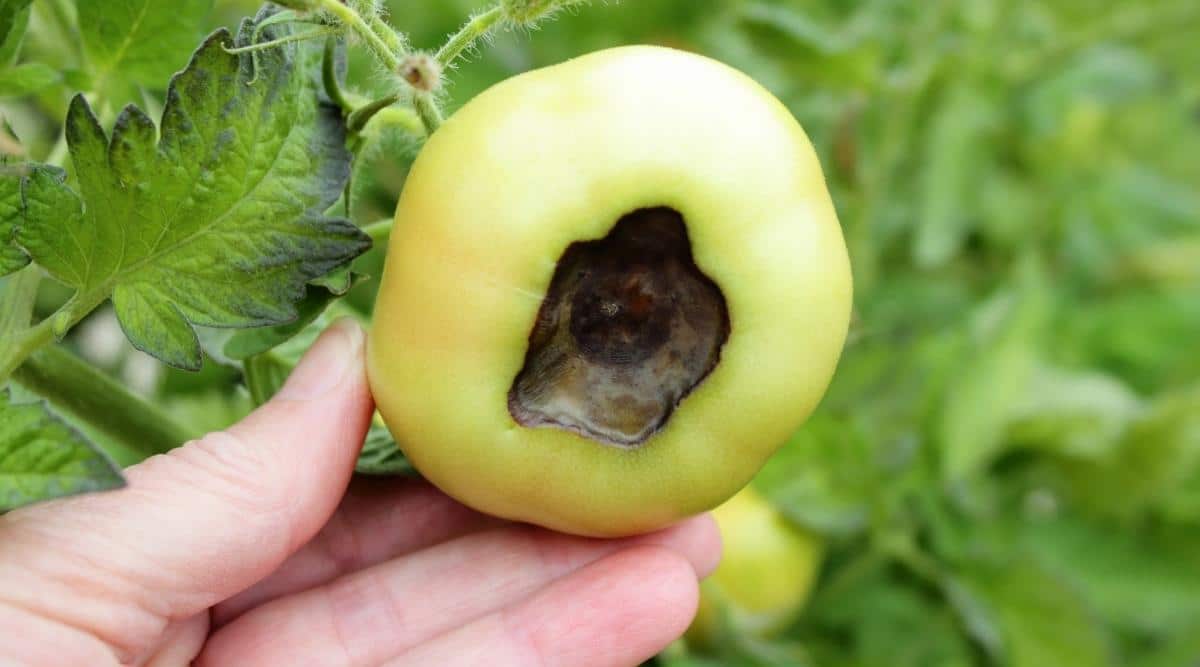
A lack of certain micronutrients – Mg , iron , sulfur , or zinc – can stimulate a status called greensickness . This is when the plant is ineffectual to develop chlorophyll . A want of these micronutrients ( magnesium is often the culprit ) cause very specific yellowing of the leaves .
When this occurs , the nervure of the foliage continue green , but the rest twist clean yellow . This dappled show is a telltale star sign that you require to introduce a new source of micronutrients to your soil .
We ’ve mentionedroot rotbefore . It can be another cause of nutrient lack in your tomato . If you suspect this , allow the land around your tomatoes completely dry out out . you’re able to also gently dig around the roots of your plant to observe their health .

If root rot has progressed to a level where nutrients are n’t being channel to your works , your best bet is to pull it and set out again .
fertilize throughout the growing seasonis the good defense lawyers against nutritive insufficiency . Tomatoes are weighed down feeders ( meaning they are urine and nourishing - hungry ) and they require to be fed pretty on a regular basis for optimum growth and fruit production . Tomatoes should be fertilize when you initially plant in your garden . Once they begin setting fruit , start fecundate again , propose for once every 2 weeks until yield production stops .
Test your soilto see what it is deficient in . A home soil run kit can be invaluable when mete out with a nutrient unbalance . Rather than guessing and skip for the best , you’re able to receive information that allow you to place the problem with confidence . Most of the clip , fertilizing regularly will prevent any imbalances , but occasionally you may be deficient in just one food . For example , if your soil is deficient in Mg , you could add epsom salts . Powdered egg shell can help with Ca want .
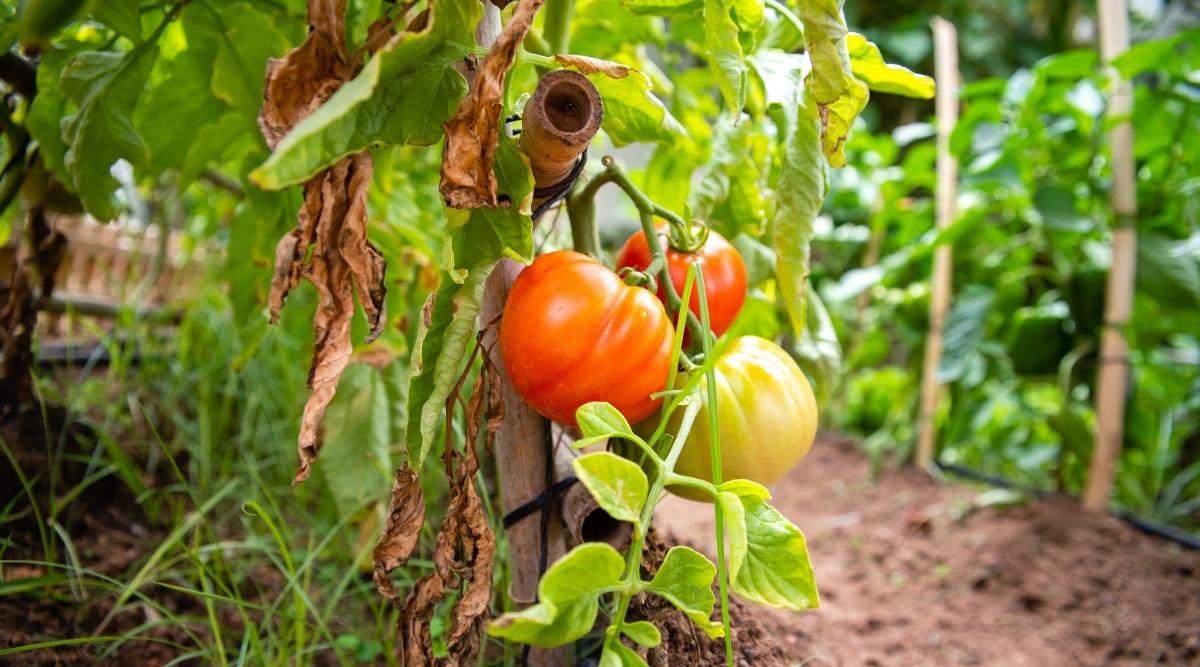
Pests
Ah pests . They can induce so much havoc in our gardens , but sadly , they are something gardeners have to cover with time of year after time of year . Lycopersicon esculentum plants attract a host of pestswhose feasting can cause tomato leave to jaundiced .
Aphids , thrips , hornworms , cutworms , spider pinch , flea beetle , and whitefly can all cause tomato leave to visibly show signs of distress . This is most often caused because thepests tip on the fool contained within the leaves .
Unlike yellowing from disease , this type of yellowing will be localized around the area of the infestation ( rather than originate from the bottom of the plant life and displace up like disease ) .
As with most of the drive of foliage yellowing in this article , the key to forfend a pest infestation is prevention . Creating an environment of biodiversity will encourage predatory insectslike ladybeetle , lacewing , parasitical white Anglo-Saxon Protestant , and spiders to take up residence in your garden . They screw to feast on the bugs that love to banquet on your tomatoes ! Invite them in and let them do the heavy lifting .
Companion planting your tomatoescan also be helpful in the war against pestis . industrial plant likenasturtiums , marigolds , basil , and chive can help deter some pests and ‘ ambush ’ others . Aphids , for representative , will collect and feed on mature nasturtiums before ever noticing your young tomato plant plants . If you choose to give companion plant a attempt this year , check that you plant these herbs and flowers several weeks in front of your tomatoes . They need to be big enough to make enough of a deviation .
Manually slay pestsis another effective – but time consuming – means of overtake an plague . Pests like aphids and whiteflies are pretty easily knocked off stems and the underside of leaves with a hard stream of water . wanderer pinch are small enough that you may just remove infested leaves if you get the trouble too soon enough . The key is to be in your garden day by day so you may notice a problem before it becomes an emergency .
It’s the End of the Season
Just like with our first section on yellowing cotyledon leaves , it ’s 100 % natural for your love apple leaves toyellowandfall off at the last of the season . think back , leave of absence subsist to facilitate feed the plant . Once fruit has set , that task is done .
So at the end of the summer when you see entire branches of parting turn yellow or brown , have a go at it that it is an expectedpart of the tomato plant plant life cycle . Simply prune off those all in leaves or halt and permit the plant to station all its remaining energy to mature the last of its fruit .
No hole ! This is another normal part of the tomato spirit cycle and should be celebrated . Your plant did its job !
Final Thoughts
If you see your tomato plant go out yellowing , my passport is judge not to panic . As you ’ve seen in this article , most cause arefairly benign and are well limit . You ’re now well equipped to identify the job .
geminate this information with your own watering and fertilizing habits and use the outgrowth of reasoning by elimination . No matter what issue you think is creditworthy , take it slow . hear to remediate the situation and grant the plant to respond . If that does n’t work , you may move onto your second surmisal . The good thing is that the more serious stuff – disease and blighter plague – is very identifiable .